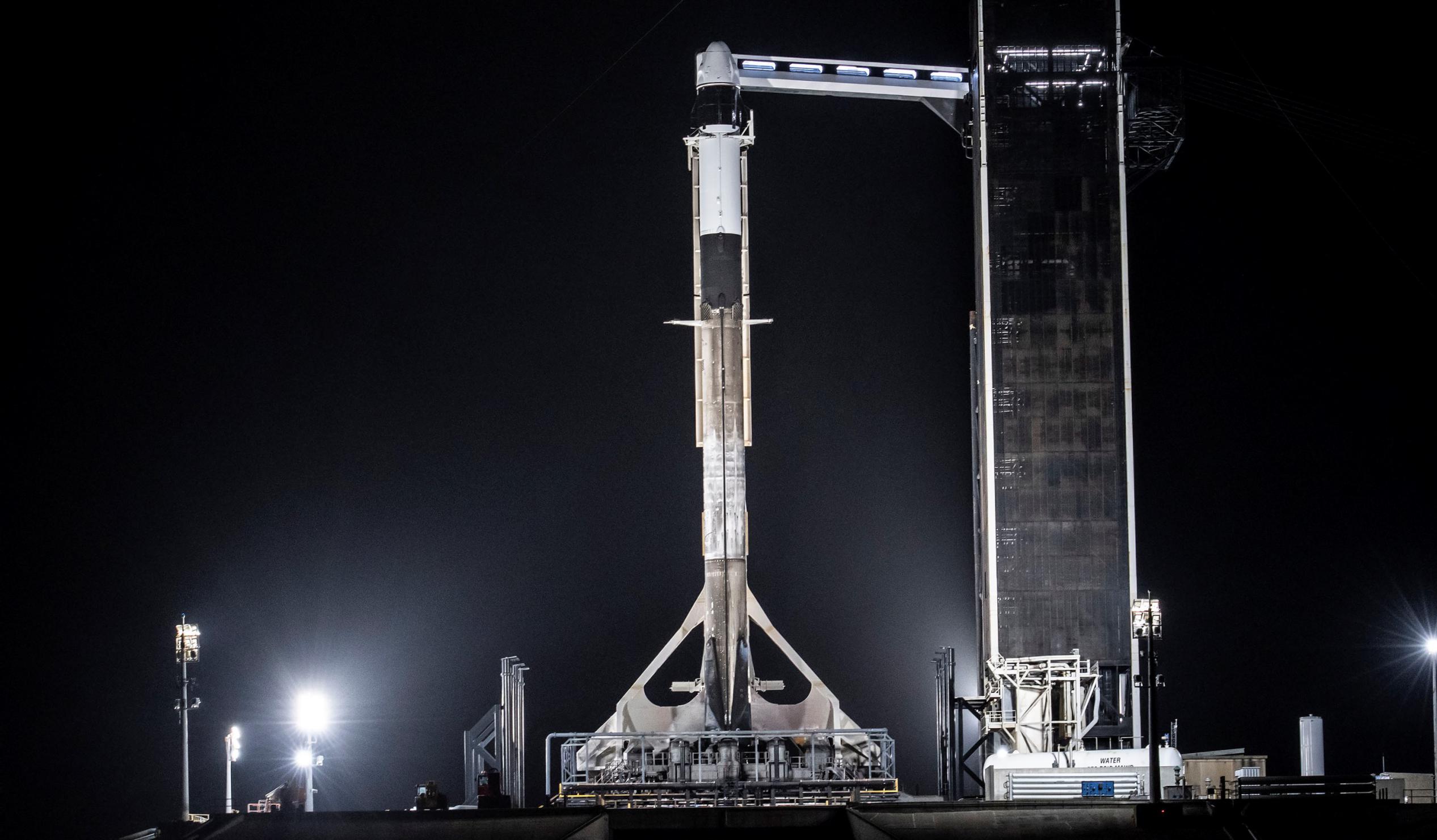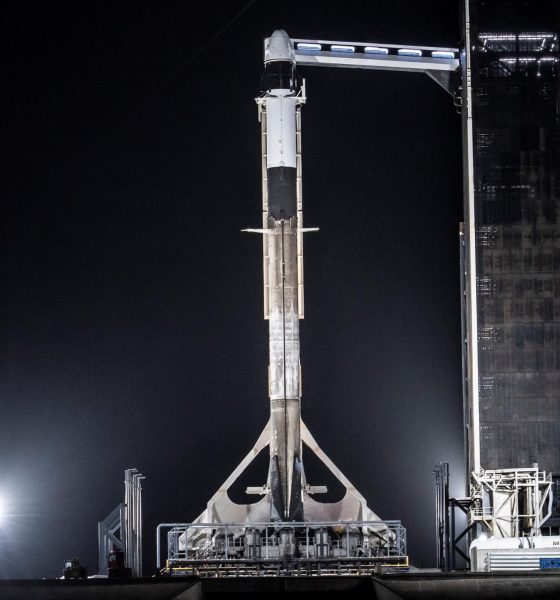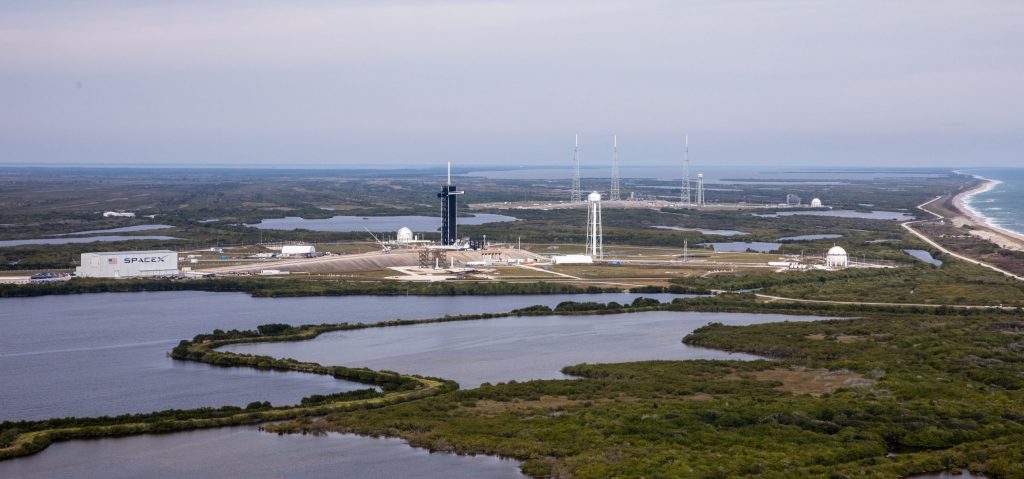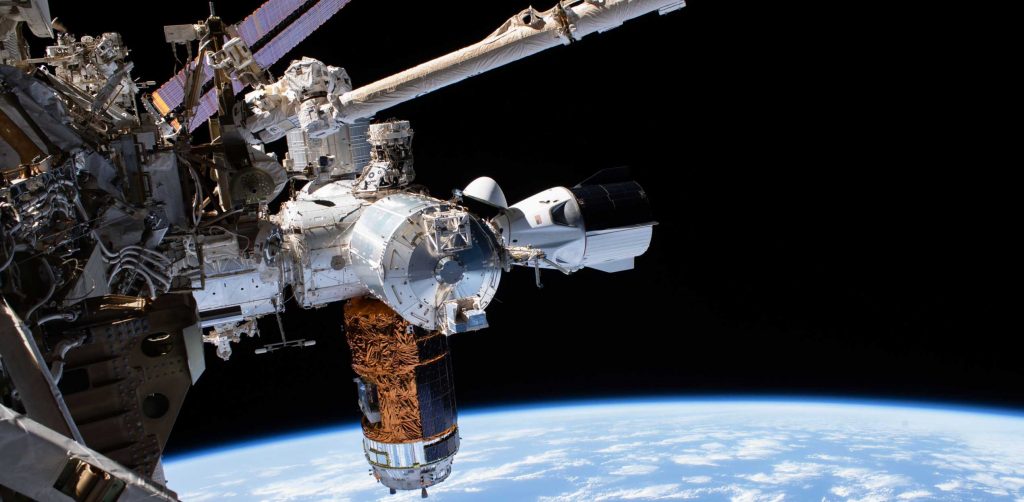

News
SpaceX set for first private astronaut launch to the International Space Station
Update: SpaceX has successfully fired up Falcon 9 booster B1062 and confirmed that Crew Dragon’s second private astronaut launch is on track to lift off at 11:17 am EDT (15:17 UTC) on Friday, April 8th. SpaceX’s live coverage will begin about three hours prior.
A flight-proven Falcon 9 rocket and Crew Dragon spacecraft have rolled out of SpaceX’s Kennedy Space Center (KSC) Pad 39A hangar and been raised vertical ahead of the company’s second private astronaut launch.
Known as Axiom-1 or Ax-1, the mission – managed by third-party provider Axiom Space – aims to be the first fully private crewed launch to the International Space Station (ISS). That means that Ax-1 will launch a crew of private astronauts from a privately-operated launch site with a privately-owned rocket and spacecraft, all with zero direct government impetus or funding. Of course, the situation is a bit more complex just beneath the surface.
The focus of Axiom-1’s crew is three ultrawealthy customers:
- Larry Connor: Ax-1’s pilot and an entrepreneur who accrued his wealth through real estate
- Eytan Stibbe: a venture capitalist and former fighter pilot who could become the second Israeli astronaut ever
- Mark Pathy: CEO of Canadian investment and shipping companies
Each paying $55 million for the ten-day journey and eight-day stay at the International Space Station (ISS), Connor, Stibbe, and Pathy are bankrolling the mission. Crew Dragon’s fourth Ax-1 passenger, however, is Michael López-Alegría, a retired four-time NASA astronaut turned private (space) pilot who now works for Axiom Space.
Launch Complex 39A was originally built and operated by NASA from the 1960s to 2011 before it was leased to SpaceX in 2014. The development of the first versions of SpaceX’s Falcon 9 rocket and Dragon spacecraft were heavily funded by NASA in the late 2000s. After SpaceX won a competitive $3.1 billion contract alongside Boeing, which received $4.8 billion to achieve the same goals, NASA has almost exclusively funded Crew Dragon’s development and is (for now) its main customer. Finally, alongside Russia’s space agency, NASA has invested tens of billions of dollars to build, launch, assemble, crew and maintain the International Space Station for around three decades.


Calling Ax-1 “fully private” is thus more of a half-truth than the full reality. Nonetheless, the fact that SpaceX has significantly benefitted from NASA funding and resources – a vast majority of which it earned competitively – should not take away from SpaceX’s extraordinary merit and achievements. While NASA provided most of the resources, Falcon 9 and Crew Dragon are almost exclusively designed, built, and operated by SpaceX and SpaceX alone. SpaceX mainly provides services to NASA, which means that NASA is ultimately closer to a customer with refined taste and the final say than a second chef in the proverbial kitchen.
Axiom-1 demonstrates that well. Save for NASA benefitting from any data gathered from the mission and making relatively minor preparations for the private astronauts’ eight-day stay at the ISS, SpaceX will control and be responsible for almost every aspect of the launch.
Barring delays, Axiom-1 is scheduled to launch no earlier than (NET) 11:17 am EDT (15: 17 UTC) on Friday, April 8th. Prior to liftoff, the SpaceX and the Axiom crew must complete a “dry dress rehearsal” early on April 6th, replicating all the preparations needed for a launch up to the start of propellant loading. Later the same day, SpaceX intends to perform an integrated static fire test with Falcon 9 and Crew Dragon. If any issues arise during those tests, the launch date may be pushed back.
Crew Dragon is expected to finish docking with the ISS about 20 hours after liftoff, giving the Ax-1 crew a little over eight full days at the ISS before they’ll need to board Dragon and return to Earth. If the weather forecast for landing zones looks particularly bad or good leading up to undocking, SpaceX and NASA withhold the ability to expedite or delay the departure.

News
Tesla FSD fleet is nearing 7 billion total miles, including 2.5 billion city miles
As can be seen on Tesla’s official FSD webpage, vehicles equipped with the system have now navigated over 6.99 billion miles.

Tesla’s Full Self-Driving (Supervised) fleet is closing in on almost 7 billion total miles driven, as per data posted by the company on its official FSD webpage.
These figures hint at the massive scale of data fueling Tesla’s rapid FSD improvements, which have been quite notable as of late.
FSD mileage milestones
As can be seen on Tesla’s official FSD webpage, vehicles equipped with the system have now navigated over 6.99 billion miles. Tesla owner and avid FSD tester Whole Mars Catalog also shared a screenshot indicating that from the nearly 7 billion miles traveled by the FSD fleet, more than 2.5 billion miles were driven inside cities.
City miles are particularly valuable for complex urban scenarios like unprotected turns, pedestrian interactions, and traffic lights. This is also the difference-maker for FSD, as only complex solutions, such as Waymo’s self-driving taxis, operate similarly on inner-city streets. And even then, incidents such as the San Francisco blackouts have proven challenging for sensor-rich vehicles like Waymos.
Tesla’s data edge
Tesla has a number of advantages in the autonomous vehicle sector, one of which is the size of its fleet and the number of vehicles training FSD on real-world roads. Tesla’s nearly 7 billion FSD miles then allow the company to roll out updates that make its vehicles behave like they are being driven by experienced drivers, even if they are operating on their own.
So notable are Tesla’s improvements to FSD that NVIDIA Director of Robotics Jim Fan, after experiencing FSD v14, noted that the system is the first AI that passes what he described as a “Physical Turing Test.”
“Despite knowing exactly how robot learning works, I still find it magical watching the steering wheel turn by itself. First it feels surreal, next it becomes routine. Then, like the smartphone, taking it away actively hurts. This is how humanity gets rewired and glued to god-like technologies,” Fan wrote in a post on X.
News
Tesla starts showing how FSD will change lives in Europe
Local officials tested the system on narrow country roads and were impressed by FSD’s smooth, human-like driving, with some calling the service a game-changer for everyday life in areas that are far from urban centers.

Tesla has launched Europe’s first public shuttle service using Full Self-Driving (Supervised) in the rural Eifelkreis Bitburg-Prüm region of Germany, demonstrating how the technology can restore independence and mobility for people who struggle with limited transport options.
Local officials tested the system on narrow country roads and were impressed by FSD’s smooth, human-like driving, with some calling the service a game-changer for everyday life in areas that are far from urban centers.
Officials see real impact on rural residents
Arzfeld Mayor Johannes Kuhl and District Administrator Andreas Kruppert personally tested the Tesla shuttle service. This allowed them to see just how well FSD navigated winding lanes and rural roads confidently. Kruppert said, “Autonomous driving sounds like science fiction to many, but we simply see here that it works totally well in rural regions too.” Kuhl, for his part, also noted that FSD “feels like a very experienced driver.”
The pilot complements the area’s “Citizen Bus” program, which provides on-demand rides for elderly residents who can no longer drive themselves. Tesla Europe shared a video of a demonstration of the service, highlighting how FSD gives people their freedom back, even in places where public transport is not as prevalent.
What the Ministry for Economic Affairs and Transport says
Rhineland-Palatinate’s Minister Daniela Schmitt supported the project, praising the collaboration that made this “first of its kind in Europe” possible. As per the ministry, the rural rollout for the service shows FSD’s potential beyond major cities, and it delivers tangible benefits like grocery runs, doctor visits, and social connections for isolated residents.
“Reliable and flexible mobility is especially vital in rural areas. With the launch of a shuttle service using self-driving vehicles (FSD supervised) by Tesla in the Eifelkreis Bitburg-Prüm, an innovative pilot project is now getting underway that complements local community bus services. It is the first project of its kind in Europe.
“The result is a real gain for rural mobility: greater accessibility, more flexibility and tangible benefits for everyday life. A strong signal for innovation, cooperation and future-oriented mobility beyond urban centers,” the ministry wrote in a LinkedIn post.
News
Tesla China quietly posts Robotaxi-related job listing
Tesla China is currently seeking a Low Voltage Electrical Engineer to work on circuit board design for the company’s autonomous vehicles.

Tesla has posted a new job listing in Shanghai explicitly tied to its Robotaxi program, fueling speculation that the company is preparing to launch its dedicated autonomous ride-hailing service in China.
As noted in the listing, Tesla China is currently seeking a Low Voltage Electrical Engineer to work on circuit board design for the company’s autonomous vehicles.
Robotaxi-specific role
The listing, which was shared on social media platform X by industry watcher @tslaming, suggested that Tesla China is looking to fill the role urgently. The job listing itself specifically mentions that the person hired for the role will be working on the Low Voltage Hardware team, which would design the circuit boards that would serve as the nervous system of the Robotaxi.
Key tasks for the role, as indicated in the job listing, include collaboration with PCB layout, firmware, mechanical, program management, and validation teams, among other responsibilities. The role is based in Shanghai.
China Robotaxi launch
China represents a massive potential market for robotaxis, with its dense urban centers and supportive policies in select cities. Tesla has limited permission to roll out FSD in the country, though despite this, its vehicles have been hailed as among the best in the market when it comes to autonomous features. So far, at least, it appears that China supports Tesla’s FSD and Robotaxi rollout.
This was hinted at in November, when Tesla brought the Cybercab to the 8th China International Import Expo (CIIE) in Shanghai, marking the first time that the autonomous two-seater was brought to the Asia-Pacific region. The vehicle, despite not having a release date in China, received a significant amount of interest among the event’s attendees.








